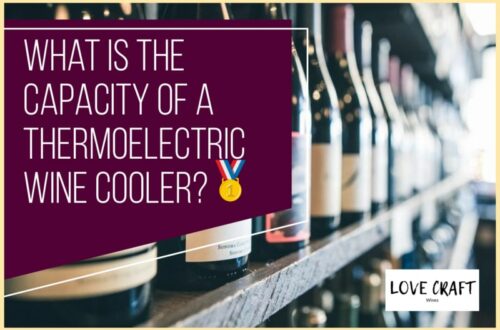If you’re a wine lover, you know that the price of a bottle of wine can vary greatly. You might be willing to pay a premium for a bottle of your favorite vintage, but have you ever wondered why some wines are so expensive?
There are several factors that contribute to the high cost of wine, from the location of the vineyard to the production and packaging costs.
One of the biggest factors that affects the cost of wine is the location of the vineyard. The quality of the grapes can vary greatly depending on the climate, soil, and other environmental factors. Vineyards that are located in prime growing regions, such as Napa Valley or Bordeaux, are often able to produce high-quality grapes that are in high demand. This can drive up the price of the wine, as winemakers must pay a premium to acquire these grapes.
But the location of the vineyard is just one of several factors that contribute to the cost of wine.
Table of Contents
The Role of Vineyard Location
So, you’re probably wondering why where the grapes are grown plays such a big role in how much you pay for that bottle of vino.
Well, the short answer is that the location of the vineyard can significantly impact the quality of the wine. Soil composition and climate variations can affect the flavor and aroma of the grapes, which in turn affects the character of the wine.
For example, vineyards located in regions with cooler climates tend to produce grapes with higher acidity levels, creating a crisp and refreshing taste. On the other hand, vineyards in warmer climates produce grapes with higher sugar content, leading to a fuller and more robust flavor.
However, the benefits of ideal vineyard locations come with a hefty price tag. Land in prime grape-growing regions is often expensive, and the cost is passed on to the consumer.
Additionally, the labor required to maintain and harvest grapes in these regions can be costly. This brings us to the next factor that contributes to the high cost of wine: labor costs in winemaking.
Labor Costs in Winemaking
You’ll see that labor is a large and luscious part of winemaking, requiring skilled and specialized workers to carefully cultivate and craft each bottle. These workers are responsible for pruning, harvesting, and sorting grapes, as well as monitoring fermentation and aging processes.
However, finding, training, and retaining these workers can be a costly endeavor for wineries. In addition, many wineries are investing in innovation opportunities and sustainability initiatives, which require additional labor and expertise.
For example, some wineries are using technology to track and optimize vineyard yields, while others are implementing organic or biodynamic farming practices. These initiatives can improve the quality and environmental impact of wine, but they also require additional labor and resources.
All of these factors contribute to the high labor costs associated with winemaking. However, wineries cannot compromise on the quality of labor if they want to produce high-quality wine. As a result, labor costs are a necessary expense for wineries, and they must continue to invest in their workforce to maintain the quality and reputation of their brand.
Now, let’s explore another factor that contributes to the high cost of wine: transportation and storage expenses.
Transportation and Storage Expenses
Transportation and storage expenses play a crucial role in the final taste and quality of wine, highlighting the significance of proper handling and care throughout the distribution process.
Wine importation involves several stages of transport, from the vineyard to the winery, to the bottling facility, and finally to the retailer. Each step requires a specific mode of transportation, which can significantly add to the overall cost of the wine.
Moreover, wine requires climate-controlled storage to maintain its quality and flavor, which further increases the expenses of distribution.
To give you an idea of how transportation and storage expenses can impact the cost of wine, here are some factors to consider:
-
The distance between the vineyard and the bottling facility can affect the cost of transportation, as well as the quality of the wine. For example, transporting wine from Australia to the United States can take several weeks, which can impact the taste and quality of the wine.
-
The cost of climate-controlled storage can vary depending on the location and duration of storage. For instance, storing wine in a warehouse in a hot climate can result in spoilage, requiring additional expenses for replacement or disposal.
-
The packaging of wine plays a crucial role in protecting it from damage during transportation. High-quality packaging, such as wooden crates or protective wrapping, can add to the overall cost of the wine.
Production and Packaging Costs
Now, let’s delve into how you can cut down on production and packaging expenses and still produce high-quality wine.
One way to achieve this is by implementing sustainable practices in your vineyard and winery. By reducing your reliance on pesticides, herbicides, and fertilizers, you can save money on inputs while also improving the quality of your grapes. Additionally, using renewable energy sources, such as solar panels or wind turbines, can help you reduce your energy costs and minimize your carbon footprint.
Another way to reduce production and packaging costs is by taking advantage of technological advancements. For example, using temperature-controlled fermentation tanks can help you control the fermentation process and reduce spoilage. Similarly, using automated bottling lines can increase efficiency and reduce labor costs. By investing in modern equipment, you can improve the quality of your wine while also reducing your production costs.
However, it’s important to balance the cost of these investments with the potential benefits they can bring to your business.
As you can see, there are several ways to reduce production and packaging costs without sacrificing the quality of your wine. By adopting sustainable practices and using modern technology, you can create a more efficient and cost-effective winemaking process.
But how do these factors affect the availability and demand for high-quality grapes? Let’s explore this topic in the next section.
Demand and Availability of High-Quality Grapes
If you want to produce high-quality wine, it’s essential to understand how the availability and demand of grapes can impact your business. One of the main factors that contribute to the high cost of wine is the limited availability of high-quality grapes.
Climate conditions and soil quality play a significant role in grape production, and not all regions can produce premium grapes that meet the demands of winemakers. Regions with ideal climate conditions and soil quality for grape production, such as Napa Valley in California or Bordeaux in France, have high demand for their grapes, which drives up the cost.
Winemakers are willing to pay a premium price for grapes that are known for producing high-quality wines, such as Cabernet Sauvignon or Pinot Noir. As a result, the limited supply of these grapes and the high demand make them expensive and contribute to the high cost of wine.
Frequently Asked Questions
How do weather patterns and climate change affect the cost of wine production?
When it comes to the cost of wine production, weather patterns and climate change play a significant role.
These factors can greatly impact crop yield, which ultimately affects the availability and price of certain grape varieties.
For example, droughts or extreme heat can cause grapes to ripen too quickly, resulting in a lower quality wine.
On the other hand, heavy rains or hail can damage the grapes and reduce the overall yield.
Additionally, changes in temperature and precipitation patterns can alter the ideal growing conditions for certain grape varieties, forcing producers to adapt and potentially invest in new equipment or techniques.
All of these factors can contribute to the high cost of wine production, as producers may need to invest more time, resources, and money to ensure a quality product.
What impact do government regulations and taxes have on the price of wine?
Are you curious about the impact of government regulations and taxes on the price of wine? Well, let me tell you a story that will shed some light on this topic.
Imagine a winery owner who has been importing grapes from a European country for years. Suddenly, the government imposes wine tariffs on imported goods, causing the cost of grapes to skyrocket.
In addition to the tariffs, the winery owner now has to pay higher licensing fees, which further increase the cost of production. As a result, the price of the wine increases, and the winery struggles to compete with domestic producers who are not subject to these additional costs.
This anecdote shows how government regulations and taxes can have a significant impact on the cost of producing and selling wine, ultimately affecting the price for consumers.
How do marketing and advertising expenses contribute to the high cost of wine?
Marketing and advertising expenses are major contributors to the high cost of wine. Winemakers have to shell out a significant amount of money on packaging expenses and production costs in order to create a product that stands out on the shelves.
The competition in the wine industry is fierce, and brands need to invest in marketing campaigns to make their products visible to consumers. This involves expensive campaigns that include sponsorships, events, and advertising in various media outlets.
All these expenses add up, and ultimately, the cost is passed down to consumers in the form of higher prices.
What role do wineries’ reputations and brand recognition play in the pricing of their wines?
When it comes to pricing wine, the reputation and brand recognition of a winery can play a significant role.
Wineries that have built up a strong reputation for producing high-quality wines using a meticulous winemaking process and grapes from prestigious vineyard locations have the ability to charge a premium price for their bottles.
This is because consumers are willing to pay more for the assurance that they’re purchasing a product that has been carefully crafted using only the best ingredients and techniques.
However, it’s important to note that while reputation and brand recognition can contribute to the high cost of wine, they’re just one of many factors that come into play when determining the price of a bottle.
How do the costs of wine distribution and retail markup affect the final price of a bottle of wine?
Imagine you’re a farmer who’s just harvested a field of grapes. Like any other farmer, you want to sell your produce for a reasonable price.
But as you begin to navigate the distribution logistics and retail margins of the wine industry, you start to realize that the final price of your product is not entirely in your control. Distributors and retailers need to make a profit too, and their markups can significantly contribute to the high cost of wine.
The costs of warehousing, transportation, and marketing all get factored into the price that consumers pay for a bottle of wine. So, while wineries’ reputations and brand recognition do play a role in pricing, it’s also important to consider the costs of distribution and retail markup when trying to understand why wine can be expensive.
Conclusion
So, now you know that the high cost of wine can be attributed to various factors.
The location of the vineyard plays a significant role in the quality and price of the wine.
The labor costs in winemaking, including the hand-picking of grapes, the pruning of vines, and the monitoring of fermentation, all add up to the final price of the wine.
Transportation and storage expenses, including the cost of barrels, bottling, and shipping, also contribute to the high cost of wine.
Additionally, the production and packaging costs, such as labeling, advertising, and marketing, can increase the final price of the product.
Finally, the demand and availability of high-quality grapes can drive up the price of wine.
In conclusion, the high cost of wine is a result of a complex combination of factors.
From the location of the vineyard, to the labor costs in winemaking, to the transportation and storage expenses, to the production and packaging costs, and to the demand and availability of high-quality grapes, all of these factors contribute to the final price of the wine.
So, the next time you enjoy a glass of wine, remember the dedication, hard work, and expenses that went into making that delicious beverage. Cheers!





